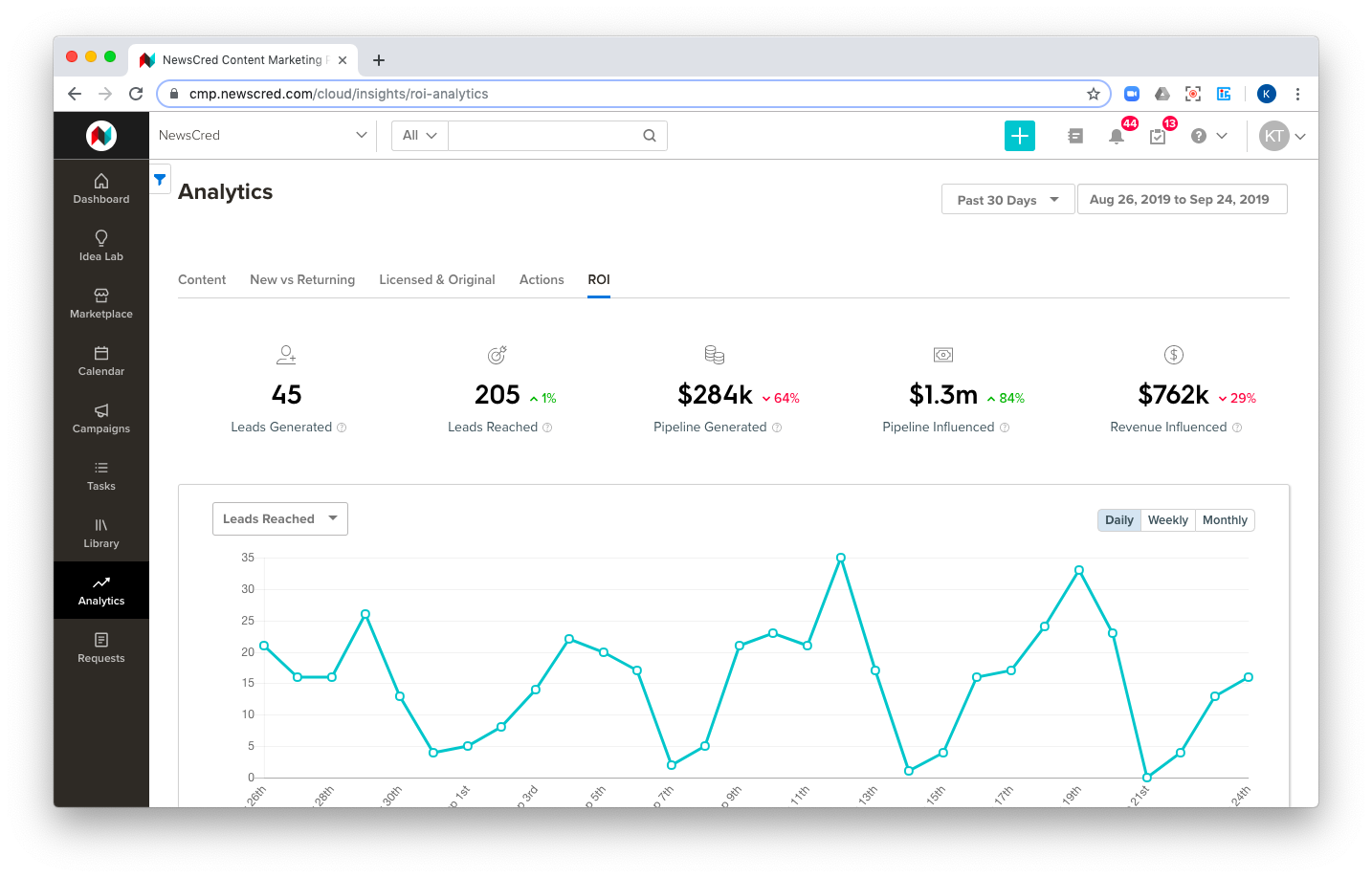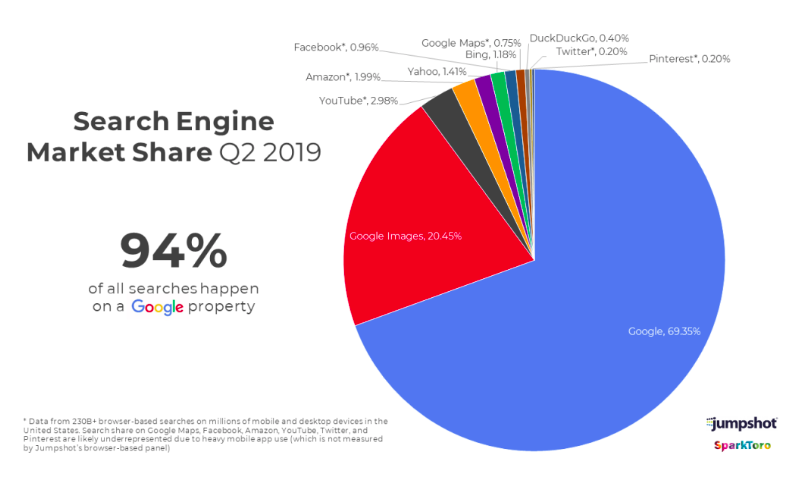Want to know how to get a suspended Google My Business listing reinstated? Here’s everything you need to know to get your all-important listing back, by GMB Product Expert Ben Fisher.
Joe awoke one morning to find that the phones were not ringing for his business. He then had some people calling in from billboard advertisements, but they were calling to ask for directions.
After a few moments of confusion, Joe checked to see if anything had happened to his business listing on Google.
Sure enough, this business was no longer on Google Maps. Gone! All those hard-earned reviews… poof! It was as if the business no longer existed.
The kicker? This was a real business. There was clear signage visible from Street View, there was a professional Street View created by a trusted photographer. The warehouse was huge.
You could even find them as a legal business entity with the secretary of state. They had another listing for a separate business entity that also had all the legit checkboxes, like a separate phone number, entrance, and LLC.
Joe immediately used Google’s reinstatement form. Bad idea.
On July 21st they heard back from Google…
Hello,
Thank you for contacting Google My Business team.
We’ve looked at your account and it looks like your business is not eligible to display on Google Maps per our quality guidelines. Check out our guidelines for representing your business on Google to see what types of businesses are eligible to be on Google Maps.
If you have any further questions please consult the Google My Business Help Center.
So Joe sends an email back, with photos of the building, entrance, signage, billboards and more facts.
Here’s what Joe said…
“We paid Google to have a photographer come in for the 360 tour and pictures a couple years ago.
I’m attaching pictures of our building, showroom, service truck, and even a billboard we have down the street advertising our business.
PLEASE HELP GET US BACK ON GOOGLE MAPS AND GET OUR REVIEWS BACK ONLINE!”
Joe ended up calling me at Steady Demand, and after looking at all the evidence and seeing that they had one listing still live, I asked: “Who else is managing the listing?”
In particular, I asked him which manager was not on the live listing but was on the suspended listing. At first, he said, “Oh no-one, I think. Just my GM.” I asked him to humor me and take a look.
Lo and behold, there was the answer: a manager from, without being too cryptic, a reputation management company that, shall we say, “flies and has a facial feature”.
I said, “Okay, let’s remove that user. Now we can proceed with a reinstatement.”
Seven days later the listing was reinstated on Google Maps.
Because the user from the reputation management company was performing map edits on a regular basis, this behaviour was flagged as suspicious by Google and this led to that user’s account being suspended (if you’re an agency managing client GMB profiles, I’d recommend avoiding making too many map edits on a daily basis).
That’s how easy to get your listing suspended on Google My Business without even knowing why, and that’s why I’ve put together the little guide below, which I hope answers all your questions about why your GMB listing has been suspended.
What Is a Google My Business Suspension?
In short, a Google My Business (GMB) suspension is what happens when your free listing on Google and Google Maps is no longer visible or under your account control, and its validity has come under question from Google.

A quick ‘word to the wise’: Whatever you do, if Google suggests creating a new listing, do not do it. You could lose all of your reviews and any ranking power you had will be gone. As long as the listing and account are in within guidelines, then you will get reinstated, no matter what support says.
How to Tell How Serious Your GMB Suspension Is
There are two kinds of Google My Business suspension. To find out which you’ve got, search for your business on Google Maps. If it’s not there, you’ve got a hard suspension. If it’s still there but you can’t access it, it’s a soft suspension.
Hard Suspensions
This is very bad. In this case, the listing has been removed from Google and from Google Maps, and is in a state where it can lose its reviews entirely.
Soft Suspensions
More often than not, this has to do with a user on the account. Soft suspensions usually mean that the listing is “disabled”. It’s still visible in search but you no longer have the means to make changes to manage it. The listing is in an unverified status at this time and very vulnerable to user edits for removal.
What Can Trigger a GMB Suspension?
Algorithmic Sweep
Sometimes Google does what is called a “sweep”, like what we saw back in June of 2109 when suspensions increased significantly.
This was an algorithmic sweep of sensitive business categories that were highly susceptible to fake GMB listings, like locksmiths and plumbers. I have even seen a listing get suspended after doing a move reinstatement, right after doing a verification. Frustrating, yes, but also computer-controlled!
The algorithmic sweep is the most common suspension cause and also the hardest to troubleshoot. It could result from anything from having your hours set to 24 hours to not setting your address properly.
Account Issues
Sometimes an account manager or owner has had their own account suspended. Maybe it’s the representative of an SEO company that has a user account and submits a ton of spammy map edits, or maybe it’s a user that does other things that violate other guidelines.
When an account gets a suspension they will usually have all listings in the account receive a suspension. I need to note here that I very often see accounts that have multiple bad listings (10+ virtual offices or spammy listings) get suspended wholesale.
If you’re managing multiple GMB accounts and most are suspended but one or more aren’t, then your account is not at fault. It will instead be a manager on a listing that is on a suspended account. If this happens to you, you either need to do what I call an “owner swap” (basically removing the current owners and replacing them with a new Google account, preferably connected to Gsuite) or you need to remove all managers before attempting a reinstatement.
Manual Suspensions
Manual suspensions happen when a Google employee has personally decided that you should not be on Google Maps. This is usually after being reported via the spam redressal form.
The way I look at this is very simple: for the most part, you are guilty until proven innocent. If there is some slight doubt on the part of the Google employee, you will get a soft suspension: you’ll still be on Google Maps but will have to go through the reinstatement process.
Note: During this time, your listing is vulnerable to removal by any user. If there are enough signals suggesting your business should be removed (which I’ll go over shortly), you will get a hard suspension and your business will be removed from Google Maps. Spammy business names and having an address at a virtual office are common reasons for a hard suspension.
Commons Reasons for GMB Suspension and How to Rectify Them
Below are some common reasons for a suspension. In all instances you will want to file for reinstatement.
Before reading on, here’s a small but important tip for you: Get it right.
In some cases, you’ll have just two chances to get reinstated. Have other professionals look over your listing. First go to the Google My Business Help Community and ask someone to review your listing details (provide business name, the address the business was verified at, and a screenshot of your GMB info tab). Then submit as much proof as possible on the reinstatement form.
P.S. Do not gripe about how much money you are losing or who cannot pay bills. It’ss distracting to anyone trying to help you and, trust me, we know your pain. In addition to this, Google doesn’t care about that or how much you spend on their ads; they are looking for facts.
With that out of the way, here are those common reasons for GMB suspension:
Listing yourself as open 24 Hours when you’re not
Make sure you are not listed as open 24 hours if you are not staffed in the office for 24 hours. Change your hours to something that is reasonable like 9AM – 5PM. It doesn’t matter if you have a call centre responding to calls at all times; Google basically wants to know when your physical door is open.
Adding keywords to your business name
Make sure your name reflects what is on your signage or with the secretary of state. It’s what people know you’re business as. It’s what’s written on your business cards and your office pens. Remove the keywords; pretty simple.
Having your address at a virtual office or co-working space
Avoid this altogether. I get it, it is cheap. But it paints a huge target on your back for competitors looking to get your listing removed, and Google is just no good at policing it. Most of the time you will have to move. If you want to stay, be prepared to show a mountain of evidence. I have reinstated a ton of them, but they are not easy at all.
Changing your address
This one is not as easy to understand since it should always trigger the re-verification process within Google My Business. But in some cases, the listing will simply get suspended. Make sure you document the previous address and, of course, the new address. Provide this during reinstatement.
Creating multiple listings for the same business
Remove the fake listings from your dashboard and then try to remove them yourself in Google Maps, or document the URL and admit your fault on reinstatement.
Creating multiple listings at the same address
Same as above: get rid of any fake business listings or be prepared to show legal proof there is another business at the location.
Interlude: Story Corner
I talked to a guy today. He was totally mystified as to why all 16 of his listings were suspended. After providing me with a spreadsheet of the listings, I could see why.
He had all 16 listings at his home address. All of them were keyword stuffed, except the real one. He explained that with his business license he could operate all over the state, so in his eyes it was totally “normal” to have a listing for every county. (If I had $10 for every time I heard this…).
After I went over the guidelines, he realized that, in total, he only qualified for two listings. If this is you or your client, you have been warned!
In a different instance, I had a client that had their Google My Business name being edited by a competitor every day. Even though the name legally had keywords in it (as in, it was their registered business name), they got so fed up that they just gave up and let the pending edit sit there. They “had better things to do”.
Well, unfortunately, one day the edit stuck and, bam, the listing was suspended immediately. When I asked the business owner if they had any of the required proof for reinstatement they were caught off guard and found their business offline for over a month.
This last example was one of the reasons I ended up developing a My Business Listing Assurance program as part of Steady Demand’s offering.
What Can Cause Suspensions to Be More Common?
There are plenty of activities that can increase the chances of suspension, even if they’re not the direct cause. Here’s a bunch I’ve noticed recently, in no particular order:
- Rogue account managers, or a user that has made too many spammy edits
- Keyword stuffing in business name (and being reported for it)
- Repeated edits to a listing in a short period of time (it’s best to wait 60 seconds between edits)
- In the wake of the now-infamous Wall Street Journal article about fake Google My Business listings, there was a wave of suspensions in quite a few categories of businesses, so publicity and press can play their parts
- Changing from a Storefront to a Service area business (this has recently become very common)
- Address or hours not matching with those on your website (especially in the case of a location inside a virtual office)
- Pin marker being in a suspicious location (I once saw a reinstatement get declined because the pin was on a garage, and had to do a video proving the location was in a duplex behind the garage)

How to Avoid Google My Business Suspension
The best way to avoid suspension is to follow the guidelines at all times and don’t try to bend the rules.
I’ve helped reinstate more than 150 locations just in the past two months, and along the way, I have witnessed many very common errors and some that were just mystifying. My key tips are:
- Make sure your business information is always up to date in the state business directory, city license or state bar.
- Hire a Street View photographer to refresh your signage.
- And don’t try to game the system with tons of listings. It’s just not worth it.
One last note: I talk to businesses every day that feel they deserve to be listed in every city they serve, and I say the same thing almost every time: this is a business decision.
If you will earn more revenue by having a presence in a metro area than the cost of staffing an office and registering the entity legally, then do it! If not, then don’t. I really think it is that simple.
The post What to Do If Your Google My Business Listing Is Suspended appeared first on BrightLocal.
![]()


















